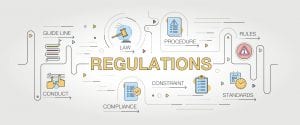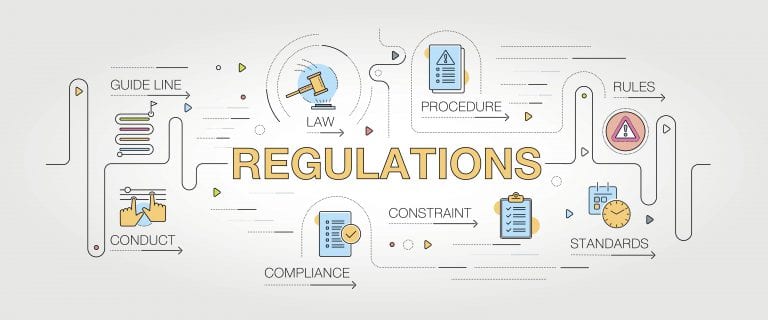Angela Morris, QCS President, writes The Essential Outbound Call Center Checklist: Top Ten Tweaks for Peak Success
June 2009
If you’re like most call center managers, your daily routine is relatively consistent. Most likely, you haven’t recently taken the time to evaluate what is working and what needs to be changed.
Typical call center organizations and the employees within those organizations have ways of doing things that are tightly woven in the fabric of their operations. It’s difficult to tell why things are done a certain way – they just are. After all, when something is working, why change it? Or why even question it, for that matter? Call center operations success requires a delicate balance of many components, and it is often best to leave things alone. However, with careful evaluation you can tweak your call center practices and set up your team for even more success.
What should be evaluated? A quick audit in ten basic areas is recommended.
1) Core Components: Thinking about these core components may seem too simplistic; however, a careful evaluation often reveals opportunities for improvement.
Is your offer compelling?
Is your script or call guide effective?
Who is your target market?
What is your dialing strategy?
Don’t be afraid to make adjustments to the core components. It can be a slow death once a core component gets stale.
2) Monitoring: Quality Assurance (QA) is widely used to monitor the calls and provide quality feedback to the call center agents. Many companies overlook is the opportunity for the QA function to listen for global elements such as: Is the scripting working? Is the offer working? Are we reaching the intended target audience?
The people performing the QA function should be encouraged to look at the bigger picture as well as analyze each agent individually. Typical QA monitoring programs use checklists and graded evaluations. This tends to cause global elements to be overlooked.
3) Data Analysis: In the past year, have contact rates shifted? On outbound programs, do you know when you’ve reached a diminishing rate of return on calling a list? Do you know the impact of the phone number you display on caller ID? Data to consider analyzing for outbound programs:
How many contacts are made on the first attempt? Second attempt? Third attempt? What is the most profitable attempt management plan? What is the most profitable maximum attempt rule?
What is the impact of using a different variation on caller ID (such as toll-free number, company name, product name, and so forth)?
What is the best time of day for making contacts? What is the best time of day for sales conversion?
4) Technology: Is your contact center maximizing contact while minimizing abandoned calls? Are you maximizing dialer performance by using the right line-to-agent ratio? Do you have the right number of agents assigned to the campaign? It is best to have one person in charge of the dialer settings. Often, too many hands on the controls can cause duplication of efforts and undoing what someone else has just modified. It is ideal to track the date, time, and specific changes that were made so you know what results are tied to the technology settings that were utilized. This allows for better tracking and reporting to find what will work best with a particular program.
5) Reporting: What gets measured gets done. In call centers, we love reports. However, do a careful inspection to ensure that reports are being utilized. If reports are not being used, get rid of them and free up the precious time to work on something of more importance – or to generate a different, more useful report.
6) Call Recording: If your center uses call recording, you’ve already invested a significant amount of resources in establishing the call recording system. Require your management team to listen to the recorded calls on a routine basis. However, don’t listen for the typical things like call quality, or how an agent handled the customer. Instead, listen for ways to cut down on the average call time (to talk with more people more efficiently with the same agent hour), listen for potential training opportunities, or listen for potential misinterpretations on your core message. The list is endless.
7) Training Beyond New Employee Orientation: Listen to twenty calls and evaluate where the call center agents are experiencing difficulty in their calls. Are they losing opportunities early in the call, or late in the call? What responses are the agents not prepared to handle?
Hold periodic focus groups with agents to gain insight from frontline employees. This also keeps the lines of communication open between call center staff and management and gives your team another opportunity to communicate successes and challenges.
8) Incentives and Goals: Just as what gets measured gets done, what gets rewarded gets done well. Be sure your compensation plan and incentives are up-to-date and meaningful for all employees.
Setting goals give employees a focus, something to strive for. Goals and incentives tie together. In this environment, it’s easy to run a variety of competitions and games within the call center to create the focus for your team. Call center operations tend to run best when creative contests and incentives are implemented. Another idea to consider is creating teams within the call center or even between other locations if possible. This gives the employees a real drive to make sure “their team” is number one. Use the valuable resources within your staff. For example if someone is an artist, have him or her create a poster to go along with the game or theme for that program.
9) Leadership: Call center leadership requires focusing on the right things and providing a stimulating environment with creative problem solving. It’s not easy to work in a call center, so the job of leader is that much harder. Do a quick self-check on your leadership. Are you focused on the right things? Are you cultivating a stimulating work environment? Do you empower your employees? Do you provide direction to your team? Successful leadership means developing your team and allowing them to spread their wings; they will feel a sense of accomplishment and continue to achieve higher goals.
10) Communication: Are you communicating key information in a clear and consistent manner? Communicate until you think people are sick of hearing your message, and then communicate it again. Just when you’re sick of saying it, they’ll start getting it. That’s a basic tenet of Marketing 101, and it is also true when communicating with your team.
Using this checklist will ensure that you think in a big picture way about the best ways to improve performance in your call center operation. When you invest in “taking a step back” from the day-to-day operation, you may find that no changes are needed. However, most likely you’ll find that a tweak or two will benefit your organization and ensure its long-term success.
Angela Morris is president and founder of Quality Contact Solutions, a telemanagement services company with experience in inbound, outbound, and e-contact service strategies. In addition to nearly twenty years of contact center management experience, Angela’s credentials include a BS in Telecommunications Management with an emphasis in Telemarketing Management and an MBA. Contact Angela at 866-963-2889 x201 or angela.morris@qualitycontactsolutions.com .
Essential Outbound Call Center Checklist
- Core components (offer, script, target market and contact strategy)
- Call monitoring
- Data analysis
- Technology
- Reporting
- Call Recording
- Training
- Goals & Incentives
- Leadership
- Communication








